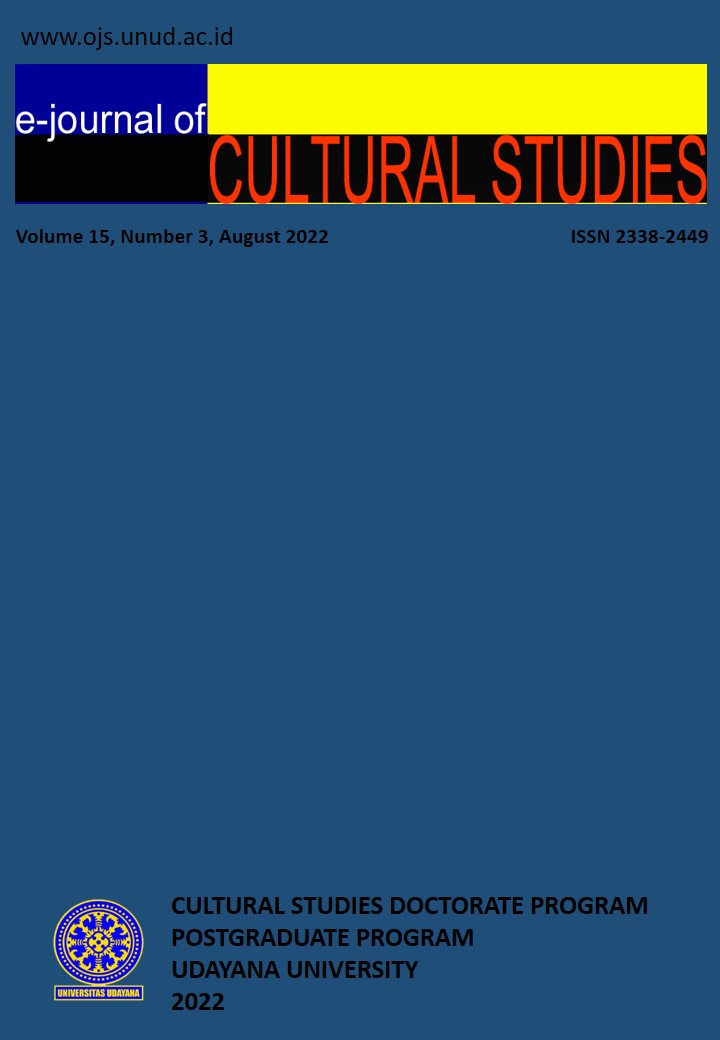UNDERSTANDING THE IDEOLOGY OF CULTURAL DUALISM IN THE CAR-SHAPE SHRINE ARCHITECTURE AT PALUANG TEMPLE, NUSA PENIDA, BALI
Abstract
This study focuses on the ideology of cultural dualism in the VW Beetle and Jeep Jimny as two car-shape shrines at Pura Paluang Nusa Penida, Bali. These two worship altars are to worship Ida Ratu Gede Ngurah Sakti and Hyang Mami or called Shiva-Durga in the pantheon of the gods of Hinduism. The architectural design of the two car-shape shrines are unique and different from most mainstream Balinese Hinduism. This shows the existence of a collective view that has ideological nuances. This qualitative study with descriptive analysis, obtained data through observation, interviews, library research and documentary techniques. The informants were determined using the purposive and snowball technique. All the data were analyzed in order to draw conclusions. The result of the study shows that the dualism of cultural ideology has inspired the development of worship altars in the form of the car-shape shrine. Primarily representing the two poles of culture. East-traditional culture is the most intense-sacred, with the profane on the side of modern-western culture. The mimicry strategy and the hybrid mechanism are very dominant in shaping the ultimate architectural identity. Socially, it legitimizes the dominant political power, identity, belief, orientation of the collective action of the people of Nusa Penida.
Keywords: ideology of cultural dualism, car-shape shrine, Paluang Temple Nusa Penida Bali







